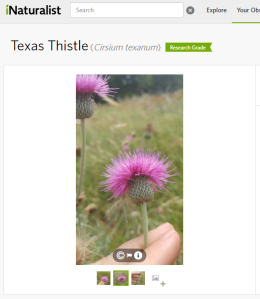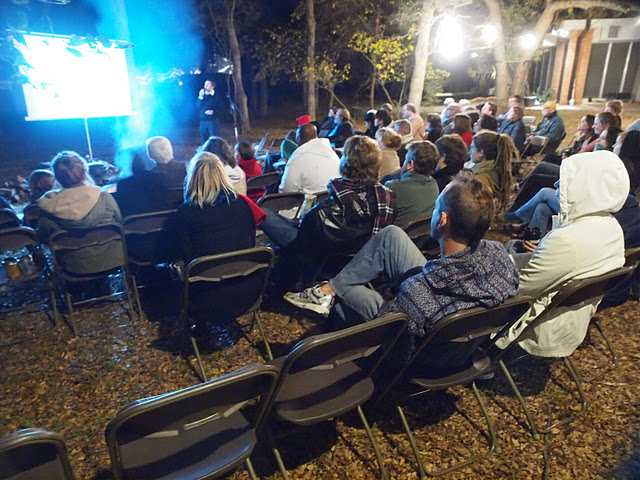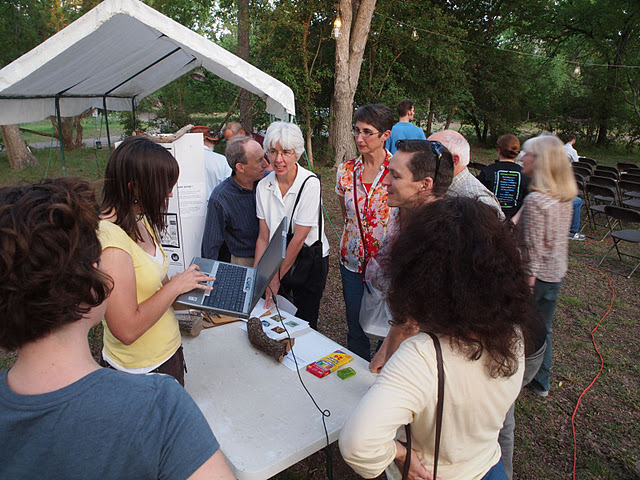Neighborhood Science is Back!
After a long COVID hiatus, Neighborhood Science is returning to a library near you! At Neighborhood Science, previous SUTS speakers will present at different library branches in the Austin area. Below are the dates and descriptions for this spring’s talks at the Howson Branch and Twin Oaks Branch libraries.
Howson Branch Library, 2500 Exposition Blvd, Austin, TX 78703

Tuesday, April 26th 6:00-7:00pm CDT: Whitney Behr – “Plant identification for everybody”
What is that plant that just popped up in your backyard? How do you find out? We will learn how to be plant detectives and figure out the name of any plant with the help of books, pictures, and asking the botanist friends you didn’t know you had.
Twin Oaks Branch Library, 1800 S 5th St, Austin, TX 78704
Thursday, May 19th 6:30-7:30pm CDT: Carly Scott – “Coral Bleaching: An On-Again-Off-Again Relationship“
You’ve probably seen photos of completely white – or bleached – coral reefs. This bleaching happens as sea temperatures rise and can be deadly for corals. However, coral bleaching is really the “break-up” between the coral animal and tiny algae partners that live within their cells. Who are these partners? What causes this relationship breakdown? Why are some corals more resistant to warming seas than others?
Through this talk, we’ll explore the relationship between corals and their algae and how scientists assess which reefs are most at risk.
April 14th, Whitney Behr
Plant identification for everybody
What is that plant that just popped up in your backyard? How do you find out? We will learn how to be plant detectives and figure out the name of any plant with the help of books, pictures, and asking the botanist friends you didn’t know you had.
Science Under the Stars is a free public outreach lecture series in Austin, Texas. The talk will be held outdoors at Brackenridge Field Laboratory, 2907 Lake Austin Blvd, Austin, Texas 78703.
Due to the COVID-19 pandemic, we request that visitors follow CDC and UT Austin-recommended guidelines to ensure the safety of all in attendance:
- Before attending the event, take the CDC’s online Coronavirus Self-Checker to ensure you are not experiencing any COVID-19 symptoms. If you are experiencing symptoms, please get tested and stay home.
- We highly recommend masking for all attendees.
- At this time, we will not be providing food or drinks to reduce the need to remove masks, please plan accordingly.
- Maintain a physical distance of at least six feet between yourself and others, seating will be spaced appropriately.
- Use the provided hand sanitizer and wash your hands (for at least 20 seconds) frequently.
For those who still prefer to attend virtually, we will be streaming the talk live on our YouTube channel. Please tune in here at 8pm CDT. We ask for your patience in case of technological difficulties as we try out this new hybrid format. Feel free to post questions for the speaker in the comments and email scienceunderthestars@gmail.com with any issues.
Though we currently plan to have in-person presentations, we may be forced to return to an online zoom format at any time, including for inclement weather. **Please subscribe to our emails, our blog, our YouTube channel, or our Facebook page for the most up-to-day event notifications.**
Here’s the schedule for this month’s event (Please note time change due to Daylight Savings):
- 7:00 pm: Kid’s activities and natural history displays of local animals and plants found at Brackenridge Field Laboratory
- 7:15 pm-7:45 pm: Guided tour of the field lab (wear sturdy shoes and bring water)!
- 8:00 pm: Settle in, because the talk begins now!
- 8:45 pm: Q&A with the speaker
First time visitor? Please read our pet policy & field station rules here, and find parking info and directions here. Please note that parking permit requirements are not enforced during our events.
Recording of What are We Eating?
Thanks to those who made it out to our last virtual Science Under the Stars with Lydia Tressel about What are We Eating? If you missed this mouthwatering presentation, check out the recording of the lecture and Q&A with Lydia. And check out our YouTube channel for recordings of our past virtual Science Under the Stars lectures!
Neighborhood Science at Twin Oaks Branch Library
Science Under the Stars has expanded to include the Austin Public Library! At Neighborhood Science, previous SUTS speakers will present at different library branches around the city a couple times a month. Below are the dates and descriptions for this fall at the Twin Oaks Branch Library, 1800 S 5th St, Austin, TX 78704. All talks begin at 7pm.

A Sweat Bee native to Texas covered in pollen. credit: Alejandro Santillana, Insects Unlocked
Thursday, October 3, 7pm: Megan O’Connell – “Bees go grocery shopping”

Leafcutter ants defending their nest against an army ant. Credit: Alex Wild Photography
Thursday, November 7, 7pm: Tristan Kubik – “Clash of the Myrmidons”
The Amazon rainforest is home to two unexpected titans. Leafcutter ants are peaceful, sedentary farmers responsible for processing huge volumes of tropical vegetation. They use their foraging material to cultivate obligate, fungal nurseries that cradle precious brood deep within their subterranean fortresses. Few organisms are courageous or capable enough to threaten mature leafcutter colonies, but the tank army ant is one of them. Tank army ants are nomadic, subterranean ant-killing machines. Their colonies can reach as many as several million and their hunger for leafcutters is insatiable. They flush out and overwhelm kilograms of prey every day with their numbers, mandibles, and venomous stings. And yet, leafcutter nests are not without defenses. Leafcutter colonies rapidly mount impressive responses to the alarming presence of tank army ant scouts including specialized soldiers, construction of barricades, and air-tight linear battlefronts. These two large, complex, derived societies clash in epic battles akin to the wars waged long ago by the Greeks and Romans with heroes just as notable as Hercules and Achilles. Such examples of social conflict are of great interest to systems science and parallels can be drawn to instances of immune systems vs disease, competing economies, and even human warfare. Join me for a night of bravery, sacrifice, and storytelling as I share my passion and knowledge about this riveting rivalry!

Amazon molly (Poecilia formosa), an all-female clonal fish
Thursday, December 5, 7pm: Allison Davis – “How to get a date: story of a clone”
Neighborhood Science at Howson Branch Library
Science Under the Stars has expanded to include the Austin Public Library! At Neighborhood Science, previous SUTS speakers will present at different library branches around the city a couple times a month. Below are the dates and descriptions for this fall at the Howson Branch Library, 2500 Exposition Blvd, Austin, TX 78703. All talks begin at 7:30pm. **These talks will be held outdoors, so bring a chair!

A Sweat Bee native to Texas covered in pollen. credit: Alejandro Santillana, Insects Unlocked
Tuesday, September 24, 7:30pm: Megan O’Connell – “Bees go grocery shopping”

Bats use sonar to see. Credit: Uwe Schmidt
Tuesday, October 29, 7:30pm: Caitlin Leslie – “Sensory Superheroes: Extreme Animal Sensory Systems”
Tuesday, November 26, 7:30pm: Chase Rakowski – “Plankton: the little alien-like creatures that might save us all”

Leafcutter ants defending their nest against an army ant. Credit: Alex Wild Photography
The Amazon rainforest is home to two unexpected titans. Leafcutter ants are peaceful, sedentary farmers responsible for processing huge volumes of tropical vegetation. They use their foraging material to cultivate obligate, fungal nurseries that cradle precious brood deep within their subterranean fortresses. Few organisms are courageous or capable enough to threaten mature leafcutter colonies, but the tank army ant is one of them. Tank army ants are nomadic, subterranean ant-killing machines. Their colonies can reach as many as several million and their hunger for leafcutters is insatiable. They flush out and overwhelm kilograms of prey every day with their numbers, mandibles, and venomous stings. And yet, leafcutter nests are not without defenses. Leafcutter colonies rapidly mount impressive responses to the alarming presence of tank army ant scouts including specialized soldiers, construction of barricades, and air-tight linear battlefronts. These two large, complex, derived societies clash in epic battles akin to the wars waged long ago by the Greeks and Romans with heroes just as notable as Hercules and Achilles. Such examples of social conflict are of great interest to systems science and parallels can be drawn to instances of immune systems vs disease, competing economies, and even human warfare. Join me for a night of bravery, sacrifice, and storytelling as I share my passion and knowledge about this riveting rivalry!


















